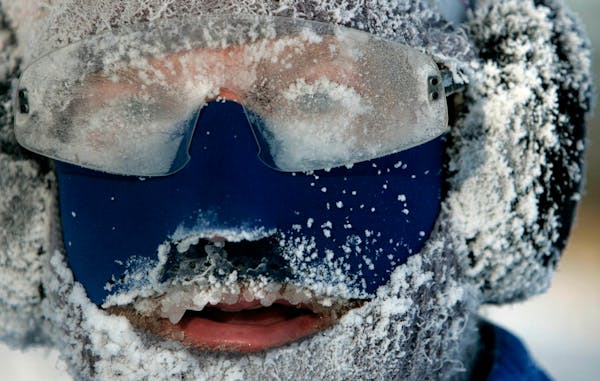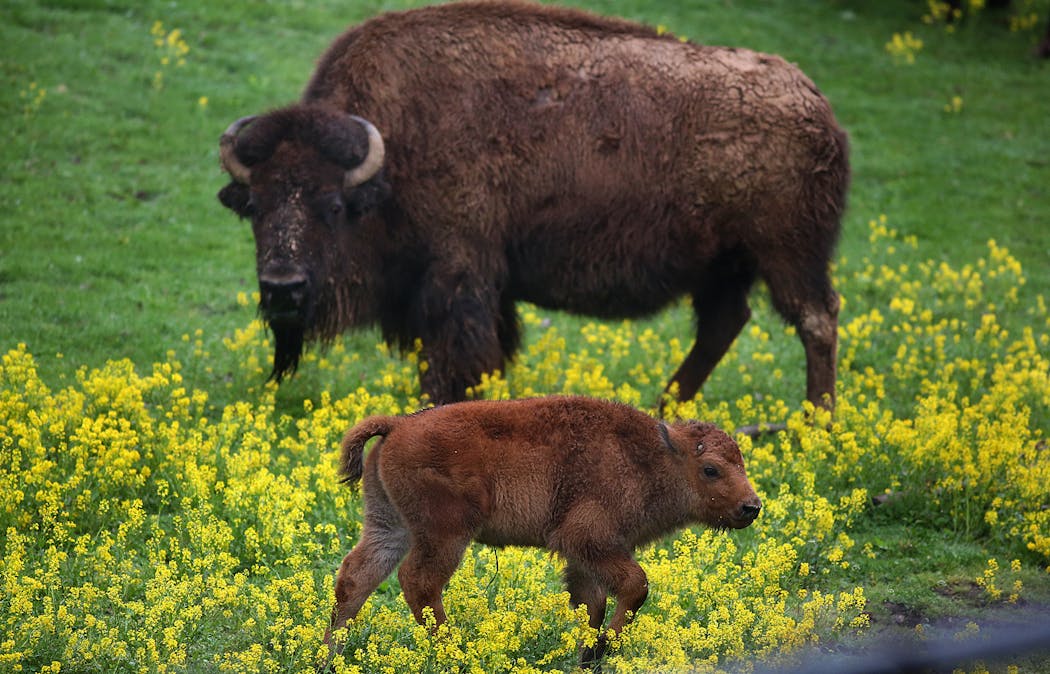When did wild bison disappear from Minnesota?
Listen and subscribe to our podcast: Via Apple Podcasts | Spotify | Stitcher
When President Barack Obama designated the American bison as the national mammal in 2016, it capped a stunning comeback for an animal that once dominated the American frontier but was nearly driven to extinction.
Centuries before American settlers migrated west, bison freely roamed the interior of the United States, from the mountains of Idaho to the woodlands of New York, in numbers surpassing 30 million before rampant hunting left fewer than 1,000 wild bison in the United States in the 1880s. The empty prairies that once teemed with bison got Ed Mathwig wondering about the animal's history in Minnesota.
The 74-year-old from Rochester turned to Curious Minnesota, our community-driven reporting initiative fueled by questions from readers, to ask: Where were bison found in Minnesota and when did they disappear?
Contrary to popular western songs, buffalo never actually roamed the United States, because they are a different animal indigenous to South Asia and Africa. Bison, with their distinct shaggy manes and broad heads, are the large wild bovines native to North America.
The recorded history of bison in the Minnesota began when the 17th-century missionary Father Louis Hennepin and a group of Native Americans found the animals along the Mississippi River, according to Evadene Swanson's "The Use and Conservation of Minnesota wildlife, 1850-1900." The animals the group encountered were American plains bison, one of two species of American bison, along with the wood bison.
Bison herds were found in all parts of the state except the northeastern Arrowhead. The vast majority roamed the Red River Valley into southern Minnesota, said Scott Kudelka, a naturalist at Minneopa State Park.
The last wild bison in Minnesota were reportedly observed in Norman County in 1880, around the time they nearly went extinct in the United States, according to Swanson.
Unbridled hunting played a primary role in the devastation of the U.S. bison population, which plummeted throughout the nineteenth century until President Theodore Roosevelt and conservationist William Hornaday formed the American Bison Society in 1905 to help rescue the species from extinction.
In Minnesota, Blue Mounds State Park spearheaded the state's first bison conservation efforts in 1961, which now oversees roughly 80 bison. The park manages part of the Minnesota Conservation Herd, along with the Minnesota Zoo and Minneopa State Park. The three sites maintain a combined herd of nearly 130 bison.
Diana Weinhardt, a curator at the Minnesota Zoo, oversees a joint program with the Minnesota Department of Natural Resources that releases bison born at the zoo into the Minneopa and Blue Mounds State Parks. Because domestic cattle have long been bred with bison to produce leaner, more resilient "beefalo," she conducts genetic testing to ensure the bison don't carry cattle genes before their release.
"If you start crossbreeding, sometimes you see with animals, depending on the animal, some health concerns," Weinhardt said.
The 532 acres at Blue Mounds are home to a genetically pure herd of bison that graze in Minnesota's dwindling prairie habitat. Once home to more than 18 million acres of prairie, Minnesota has just over 1% of its native prairie left, according to the DNR.
"If you don't have prairie, you're not going to have true wild bison," Kudelka said.
Across North America, an estimated 360,000 bison live in private, public and tribal herds, according to the National Bison Association — a drastic increase from the dire numbers more than a century ago.
Estimating the size of Minnesota's total bison population is a challenge, because farms raising bison for meat don't have to disclose herd size, Kudelka said.
"It's a very complicated story," Kudelka said. "Even when I give tours, which are about an hour, I can't cover everything. There's so much nuance."
---
If you'd like to submit a Curious Minnesota question, fill out the form below:
Read more Curious Minnesota stories:
Is Minnesota actually more German than Scandinavian?
Why do we have water towers and what do they do?
How did Minnesota become the Gopher State?
Why do so many Fortune 500 companies call Minnesota home?
Should Minnesota be considered part of the Midwest?
What is the best place, time to see northern lights in Minnesota?
How did these 11 Minnesota towns get their unusual names?
Has Minnesota every had a major earthquake?
Is Minnesota's tiny Lake Itasca the true source of the Mississippi River?
Why isn't Isle Royale a part of Minnesota?
How did Minnesota's indigenous people survive the extreme winters?




